I’ve been there too. Worried about how your sourdough starter, which you’ve painstakingly brought to life will survive without you whilst you are enjoying a well earned break!
- I wanted to go travelling but there was a tiny sense of guilt when just thinking about leaving my sourdough starter home alone. Will he be able to survive without me feeding him twice per day? Will he think I abandoned him? Will he go moldy?
- I was everywhere else but in my kitchen to be able to bake sourdough bread.
- I thought about taking a break from sourdough baking (Is that even possible?)
Dear reader, worry no more. Sourdough starter is one of the most resilient/intelligent things you will meet in your life. Well, it might not be able to survive 96 month without food like human fish do, but hey, two or six weeks (or months) is great too, right?
Table of Contents
How to preserve sourdough starter short to long-term?
You have a few options, so I’ll run through them and you can make up your mind as to which method of trying to preserve your sourdough starter suits you best.
1. Make very stiff starter and keep it in the fridge.
Stiff sourdough starter is starter with low hydration level (less than 100%) and the consistency of dough. To make stiff starter, I took a tablespoon of my 100% hydrated rye sourdough starter left from the last baking before the travel and mixed it with 80 g of rye flour and 55 g of water (or more if the batter is really dry). I kept the starter on the counter for 30 minutes and then put it in the fridge until I came home from vacation.
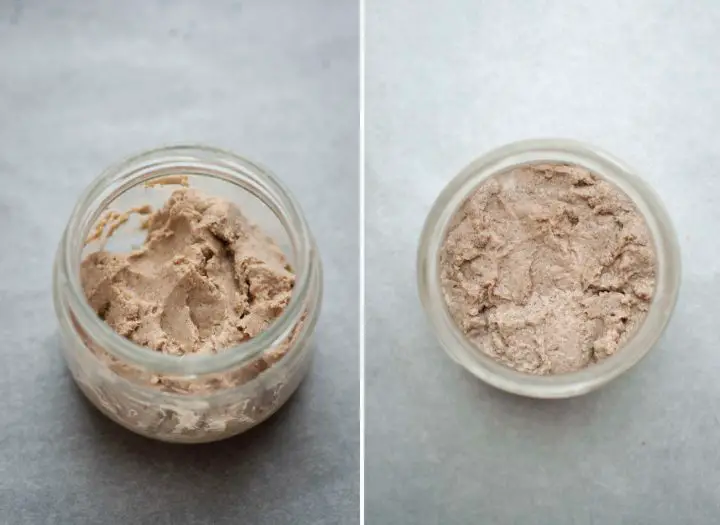
In stiff starter, yeasts and bacteria grow slower due to the harder time accessing the nutrients. This means it will take longer time for your starter to fully rise (this means you can enjoy your vacation without being worried about your starter going crazy).
Keeping your starter in the fridge will not kill the bacteria and yeast, low temperature just slows down their activity. Bacteria is normally most active between 30-35°C (86-96°F) and yeast in acid environent between 20-25°C (68-78°F).
When opening a jar with your stiff starter after one week or more, you will notice it has risen and also that your starter has sharp acidic smell – this is acetic acid. Acetic acid is a product of bacteria and its production is higher at the lower temperature due to the higher availability of fructose (product of enzyme activity of yeast that function well at low temperatures) which makes the acetic acid production possible.
Option: You might also try to leave your more liquid starter in the fridge for more than one week. In that case, just make sure you mix larger quantitities of flour into it and that you keep the jar clean.
2. Freeze you sourdough starter
Feed your starter as you normally do, leave it to rise and then place it into freezer. When you are ready to use it again, thaw it and feed it regularly to bring it back to its activity (or experiment what the unfed starter can do) – you might have to feed it twice in 12 hours to see any activity.
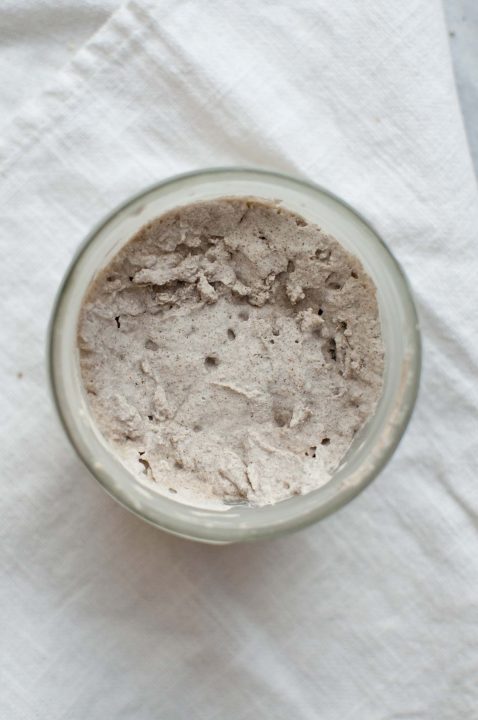
3. Dehydrate your starter
To dehydrate your starter, feed it as you always do (I fed my rye sourdough starter with 30 g of rye flour and 30 g of water) and let it ferment until fully risen and ripe. Next, spread it over a silicon mat as thinly as possible and place it into dehydrator for 12 hours at 40°C (104°F) or set it aside to any other warm place in your house and let it dry completely until cracly.
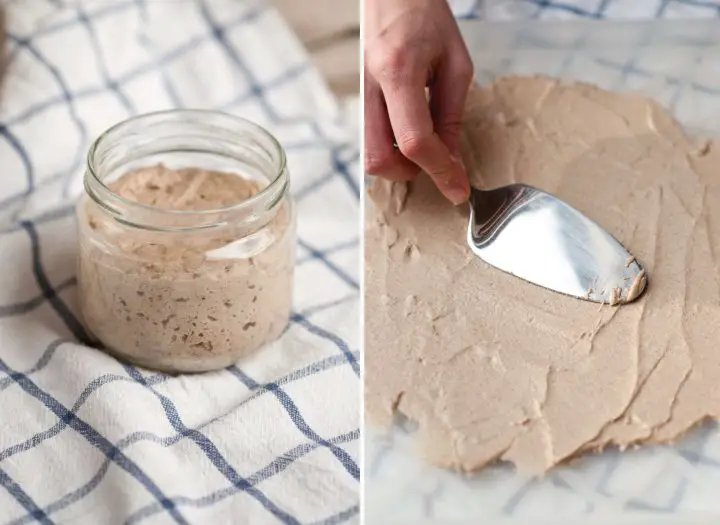
Once dried, use a rolling pin to crack the large flakes into smaller once. Place the flakes into a jar or into a plastic bag and keep sealed until ready to use.
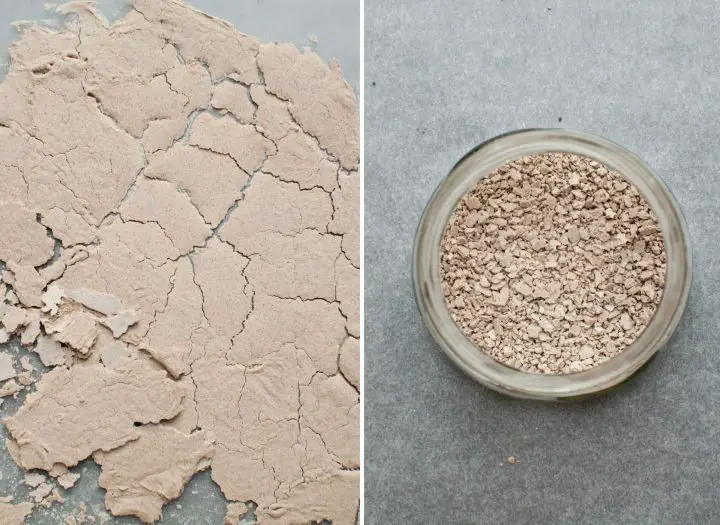
To revive your dehydrated starter, take 4 teaspoon of dried sourdough starter flakes, mix it with 4 teaspoons of water and leave to soak and soft for 10 minutes. After 10 minutes add 20 g or whole grain rye flour and 20 g of water. Place the jar to a warm place and leave the batter to ferment for 12 hours. After 12 hours add additional 20 g of rye flour and 20 g of water and leave it to ferment for the next 24 hours. After 36 hours you should see the activity, if not, wait for additional hours and then feed it again. Having a starter in dried form is a great option if you would like to send it to a friend.
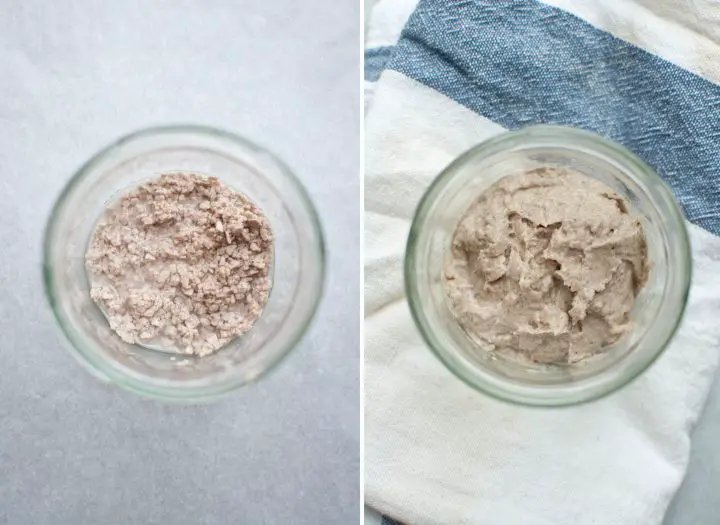
Reviving dehydrated sourdough starter.
4. Ask someone to take care of it while you are on vacation
Sourdough starter sitter or a sourdough hotel maybe?
5. Discard your starter and start a new one when you are ready to bake again
It only takes 3 days to make your starter from the scratch.
How do you take of your starter when travelling/not baking?
Have you tried to keep your starter in the fridge/freezer for more than 3 (6, 9, 12) month? What was the result – were you able to revive it?
Tell me in a comment below 🙂
In the meanwhile, check out my pumpkin seed pesto recipe for ideas what to put on your sourdough after you return from vaca!



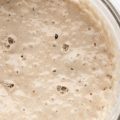
![How To Keep Sourdough Starter Warm [Best Tips And Why You Need To] 9 How to keep sourdough starter warm [best tips]](https://www.mydailysourdoughbread.com/wp-content/uploads/2023/07/a-bubbly-starter-on-a-cooling-rack-120x120.jpg)

